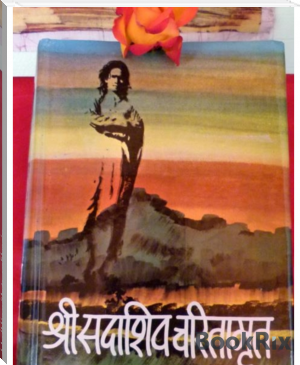Martin Luther King Jr. Day Anthology by - (children's ebooks free online TXT) 📖

- Author: -
- Performer: -
Book online «Martin Luther King Jr. Day Anthology by - (children's ebooks free online TXT) 📖». Author -
In the South, notwithstanding the raising in 1861 of a colored Confederate regiment by Governor Moore of Louisiana (a magnificent body of educated colored men which afterwards became the First Louisiana National Guards of General Weitzel’s brigade and the first colored regiment in the Federal Army), the feeling against negro troops was insurmountable until the last days of the struggle. Then no straw could be overlooked. When, in December, 1863, Major-General Patrick R. Cleburne, who commanded a division of Hardee’s Corps of the Confederate Army of the Tennessee, sent in a paper in which the employment of the slaves as soldiers of the South was vigorously advocated, Jefferson Davis indorsed it with the statement, “I deem it inexpedient at this time to give publicity to this paper, and request that it be suppressed.”
General Cleburne urged that “freedom within a reasonable time” be granted to every slave remaining true to the Confederacy, and was moved to this action by the valor of the Fifty-fourth Massachusetts, saying, “If they [the negroes] can be made to face and fight bravely against their former masters, how much more probable is it that with the allurement of a higher reward, and led by those masters, they would submit to discipline and face dangers?”
With the ending of the civil war the regular army of the United States was reorganized upon a peace footing by an act of Congress dated July 28, 1866. In just recognition of the bravery of the colored volunteers six regiments, the Ninth and Tenth Cavalry and the Thirty-eighth, Thirty-ninth, Fortieth, and Forth-first Infantry, were designated as colored regiments. When the army was again reduced in 1869, the Thirty-eighth and Forty-first became the Twenty-fourth Infantry, and the Thirty-ninth and Fortieth became the Twenty-fifth. This left four colored regiments in the regular army as it was constituted from 1870 until 1901. There has never been a colored artillery organization in the regular service.
To these new regiments came a motley mixture of veterans of volunteer organizations, newly released slaves, and some freedmen of several years’ standing but without military experience. They were eager to learn, and soon showed the same traits which distinguish the black regiments to-day,—loyalty to their officers and to their colors, sobriety and courage, and a notable pride in the efficiency of their corps. But if ever officers had to “father and mother” their soldiers they were the company officers of these regiments. The captains in particular had to be bankers, secretaries, advisers, and judges for their men. As Lieutenant Grote Hutcheson has stated it, “The men knew nothing, and the non-commissioned officers but little more. From the very circumstances of their preceding life it could not be otherwise.
They had no independence, no self-reliance, not a thought except for the present, and were filled with superstition.” Yet the officers were determined to prove the wisdom of the experiment.
To do this they were forced to give their own attention to the minutest details of military administration, and to act as non-commissioned officers. The total lack of education among the men necessitated an enormous amount of writing by the officers. In the Ninth Cavalry only one man was found able to write well enough to be sergeant-major, and not for several years was it possible to obtain troop clerks. When the Tenth Cavalry was being recruited an officer was sent to Philadelphia with the express purpose of picking up educated colored men for the non-commissioned positions. Difficult as the tasks of the officers thus were, most of them felt well repaid for their unusual labors by the affectionate regard in which they were held by their soldiers, and by the never-failing good humor with which the latter went about their duties.
As the years passed the character of the colored soldiers naturally changed. In place of the war veterans, and of the men whose chains of servitude had just been struck off, came young men from the North and East with more education and more self-reliance. They depended less upon their officers, both in the barracks and in the field, yet they reverenced and cared for them as much as did their predecessors. Their greatest faults then as now were gambling and quarreling. On the other hand, the negro regiments speedily became favorably known because of greater sobriety and of fewer desertions than among the white soldiers.
It was the Ninth Cavalry which a few years ago astonished the army by reporting not a single desertion in twelve months, an unheard-of and perhaps undreamed-of record. In all that goes to make a good soldier, in drill, fidelity, and smartness, the negro regular from the first took front rank.
Nor was there ever any lack of the fighting quality which had gratified the nation at Fort Wagner, or at Fort Blakely, Ala., where the Seventy-third Colored Infantry, under Colonel Henry C.
Merriam, stormed the enemy’s works, in advance of orders, in one of the last actions of the war. It soon fell to the lot of the Ninth and Tenth Cavalry to prove that the negroes could do as well under fire in the Indian wars as they had when fighting for the freedom of their race. While the Twenty-fourth and Twenty-fifth Infantry had merely garrison work to do, the Ninth and Tenth Cavalry scouted for years against hostile Indians in Texas, New Mexico, Colorado, and Kansas, always acquitting themselves honorably. In September, 1868, a little over two years after their organization, three troops of the Ninth Cavalry did well in an action against Indians at Horsehead Hills, Texas. When General George A. Forsyth and his detachment of fifty scouts were surrounded and “corralled” by seven hundred Indians on an island in the Republican River, it was the troop of Captain Louis H.
Carpenter, of the Tenth Cavalry, which first came to their rescue.
Similarly when Major T. T. Thornburg’s command was nearly wiped out by Utes in 1879, it was Captain F. S. Dodge’s Troop D of the Ninth which succeeded in reaching it in time, losing all its horses in so doing. This regiment alone took part in sixty Indian fights between 1868 and 1890, during which time it lost three officers and twenty-seven men killed, and had three officers and thirty-four men wounded. The Tenth Cavalry’s casualties were also heavy during this same period, and it fought for many years over a most difficult country in New Mexico and Arizona, taking a conspicuous part in running to earth Geronimo’s and Victoria’s bands of Apaches.
On one of these campaigns Lieutenant Powhatan H. Clarke gave effective proof of the affection which the officers of colored regiments have for their men. In the fight in the Pineto Mountains with a portion of Geronimo’s forces this young Southerner risked his life to save a colored sergeant who had fallen wounded in an open space where both he and his rescuer were easy marks for the Apaches. For this gallant act Lieutenant Clarke rightly received a medal of honor. The Twenty-fourth Infantry, on the other hand, has contributed a striking instance of the devotion of colored soldiers to their officers. When Major Joseph W. Wham, paymaster, was attacked by robbers on May 11, 1889, his colored escort fought with such gallantry that every one of the soldiers was awarded a medal of honor or a certificate of merit. Some of them stood their ground although badly wounded, notably Sergeant Benjamin Brown, who continued to fight and to encourage his men until shot through both arms. In a fight against Apaches in the Cuchilo Negro Mountains of New Mexico on August 16, 1881, Moses Williams, First Sergeant of Troop I, Ninth Cavalry, displayed such gallantry that he was given a medal of honor by common consent. When the only officer with the detachment, Lieutenant Gustavus Valois, had his horse shot under him, and was cut off from his men, Sergeant Williams promptly rallied the detachment, and conducted the right flank in a running fight for several hours with such coolness, bravery, and unflinching devotion to duty that he undoubtedly saved the lives of at least three comrades. His action in standing by and rescuing Lieutenant Valois was the more noteworthy because he and his men were subjected, in an exposed position, to a heavy fire from a large number of Indians. For splendid gallantry against Indians, while serving as sergeant of Troop K, Ninth Cavalry, on May 14, 1880, and August 12, 1881, George Jordan was also given a medal of honor. Five of the medal of honor men now in the service are colored soldiers, while fifteen others have “certificates of merit” also awarded for conspicuous deeds of bravery.
It was not until the battle of Santiago, however, that the bulk of the American people realized that the standing army comprised regiments composed wholly of black men. Up to that time only one company of colored soldiers had served at a post east of the Mississippi. Even Major, later Brigadier-General, Guy V. Henry’s gallop to the rescue of the Seventh Cavalry on December 30, 1890, with four troops of the Ninth Cavalry, attracted but little attention. This feat was the more remarkable because Major Henry’s command had just completed a march of more than one hundred miles in twenty-four hours. But in the battle at Santiago, the four colored regiments won praise from all sides, particularly for their advance upon Kettle Hill, in which the Rough Riders also figured. From the very beginning of the movement of the army after its landing, the negro troops were in the front of the fighting, and contributed largely to the successful result. Although they suffered heavy losses, especially in officers, the men fought with the same gallantry they had displayed on the plains, as is attested by the honors awarded. In every company there were instances of personal gallantry. The first sergeants especially lived up to the responsibilities placed upon them. The color sergeant of the Tenth Cavalry, Adam Houston, bore to the front not only his own flags, but those of the Third Cavalry when the latter’s color sergeant was shot down. In several emergencies where troops or companies lost their white officers, the senior sergeants took command and handled their men in a faultless manner, notably in the Tenth Cavalry.
Indeed, the conduct of these men has done much to dispel the old belief that colored soldiers will fight only when they have efficient white officers. This may well have been true at one period of the civil war when the colored race as a whole had never even had the responsibilities attaching to free men. It is growing less and less true as time passes and better educated men enter the ranks. in recognition of their achievements at Santiago a number of these black non-commissioned officers were made commissioned officers in several of the so-called “immune”
regiments of United States Volunteers raised in July, 1898. None of these organizations were in service long enough to become really efficient, and a few were never properly disciplined.
Nevertheless, a majority of the officers promoted from the colored regulars bore themselves well under exceedingly trying circumstances. Some of them, and a number of regular sergeants and corporals who had succeeded to





Comments (0)